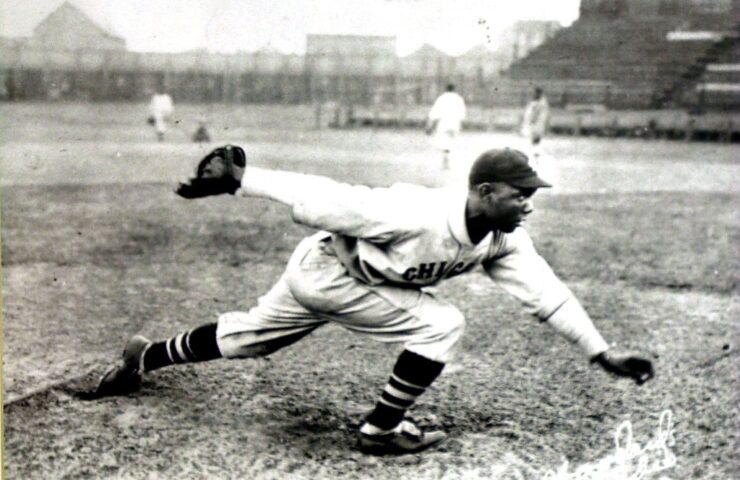
The 1st Negro National League game was played 105 years
It was a long defend Black baseball players to be treated with regard. We see the outcomes of that battle for athletic equality today, and Chicago was associated with a turning point more than a century earlier.
While the portion of Black players in Big league Baseball remains low (just 6.2% on opening day), Black stars are prominent throughout all 30 teams. The New York City Yankees’ Aaron Judge holds the American League’s single-season record with 62 home runs. Mookie Betts hasn’t lost a step with the Los Angeles Dodgers, winning his third World Series ring last fall. And the Pittsburgh Pirates’ Andrew McCutchen is a former MVP who might discover himself in the Hall of Fame one day.
The Chicago White Sox have their own share of Black history. Hall of Famer Minnie Miñoso was the very first Black player in a Sox lineup and completed his career with 2,110 hits, 1,225 runs, 1,093 RBIs and 216 stolen bases. The Cuban native also was the first Afro-Latin player to play in MLB, which was an enormous leap for the Latin neighborhood. Now about 28% of the league is Latin American according to MLB’s opening-day report.
In 1959, the Sox traded the precious Miñoso for another Black player, outfielder Al Smith. Along with Hall of Popularity pitcher Early Wynn, Smith helped lead the Sox to the AL pennant in 1959. They would go 56 years before winning another pennant in 2005.
Before Thursday’s series finale against the Milwaukee Brewers at Rate Field, Sox left fielder Michael A. Taylor spoke about his views on Black baseball today. He said he had the “obvious” childhood heroes such as Ken Griffey Jr. and Derek Jeter, but he believes there’s work to do in regards to Black representation in the majors.
“I still think there’s space for growth,” Taylor told the Tribune. “However there’s things in place and the Players Alliance is doing a great task at growing the game, and in the next couple of years we’ll see that number (of Black players) boost.”
Black men were associated with the development of professional baseball in the mid-1800s, with many of them dipping into an elite level compared to their white peers. Those players didn’t see success due to the Jim Crow laws in location after the Civil War.
The players’ love for the game remained unscathed, so they created their own teams across the United States to continue to play. Pitcher Andrew “Rube” Foster acquired national attention after winning 44 straight games for the Philadelphia Cuban X-Giants in 1902. He was extensively viewed as the very best pitcher in the nation, but race laws avoided him from making the strides he wanted.
Still searching for a chance to play expertly, Foster partnered with John Schorling, the son-in-law of former White Sox owner Charles Comiskey, to produce the Chicago American Giants in 1911. With the group playing an amazing brand name of baseball, attendance increased at Giants games as time went on.
Despite their success, Giants games– together with those of other Black groups– were strictly regulated by booking representatives. Foster wanted much better for his peers, so he started handling the concept of a Black professional league.
The group’s owners met at a YMCA in Kansas City, Mo., to discuss prepare for an expert Black baseball league. To their surprise, Foster came in with the documents, indicating that the Negro National League (NNL) was official.
In the inaugural NNL game played on May 2, 1920, the Indianapolis ABCs beat the Chicago American Giants 4-2. This was the beginning of euphoria for Black baseball, and the NNL led the way up until Jackie Robinson broke the MLB color barrier in 1947.
The stats from the NNL would go through a long procedure of being omitted from MLB record books before the Negro Leagues were categorized as major in 2020. Four years later, more than 2,300 Negro League players were added to the major-league record books.
This turned the history of baseball totally, and the hard work of Black players throughout history was lastly acknowledged. The move was seen as long overdue by present players such as Cincinnati Reds pitcher Hunter Greene.
“I’m going to need to do a little bit more research study and comprehend a few of the history to type of rewire my brain on some of the very best players,” Greene told the AP in 2024.
The pursuit for equality stays widespread in the United States today. Former White Sox shortstop Tim Anderson, now with the Los Angeles Angels, represented equivalent rights during his time in Chicago. He kneeled throughout the national anthem in the 2020 season opener versus the Minnesota Twins, calling it an “emotional minute.”
“I tried not to shed a lot of tears because we are going through something where the world needs to alter,” Anderson said that day. “It was just right that I had to reveal my love, I had to support.”
